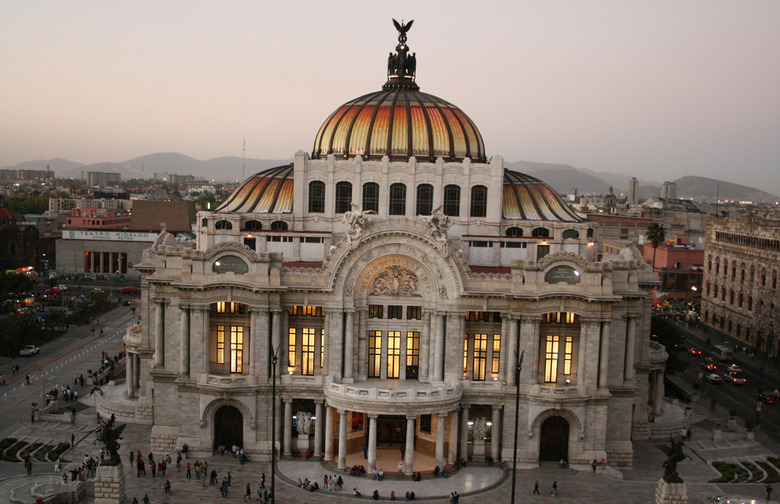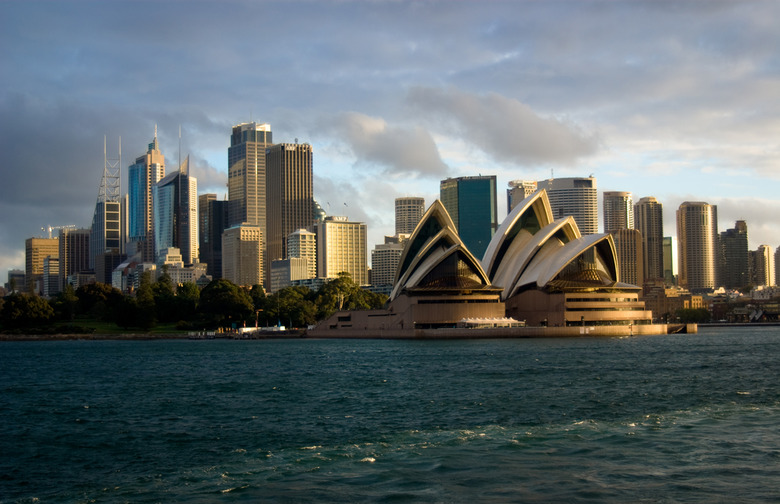10 Best Cities Around The World For The Gluten-Free (Slideshow)
Not only is this vibrant South African city so diverse that it boasts a wide variety of gluten-free cuisines — such as South Indian — but the South African diet is very meat-centric anyway, complemented with vegetables and fruit. Since Cape Town is a coastal city, it also specializes in a variety of seafood. For a breathtaking experience, go to the allergy-friendly Kirstenbosch Tea Room, located at the beautiful Kirstenbosch Botanical Gardens, one of our top 10 parks in the world for picnicking.
Cochin, India
A lot of South Indian cuisine is gluten-free by default, so why Cochin as opposed to, say, Chennai, or even Colombo in Sri Lanka? Because Cochin is in the State of Kerala, and Kerala cooks often use rice and fish as their main ingredients — along with lots of spices. You'll never feel like you are missing out on food in Kerala, because the few popular wheat items (chapati or parathas) are not technically Kerala cuisine; wheat items are better in North India, anyway. Here, you'll want to eat appam — a pancake made from rice flour (which is gluten-free) and coconut milk.
Cochin is one of the tastiest cities in India. See five others in this list.
Denver
Larger, coastal cities often get credit for paving the way in regard to major changes in America, but when it comes to gluten-free menu options, the trend first started in middle of the country. Denver has one of the lowest percentages of obese adults in the nation, so it's really no surprise it would lead the charge toward accommodating folks with dietary restrictions. One of the city's stand-out eateries? Panzano — which, in spite of being an Italian restaurant, features separate gluten-free menus for breakfast, lunch, dinner, and even brunch. Thank Executive Chef Elise Wiggins for this, as she altered the AAA Four Diamond-winning restaurant's menu following her brother's celiac disease diagnosis.
Dublin
Ireland is known as the land of Guinness, brown bread, and fish and chips, but it's also a land that's quite familiar with celiac disease. Due to the high amount of sufferers nationally, the Irish Coeliac's Association was founded way back in 1963, and has been promoting awareness of the illness ever since. When the gluten-free movement first began, Ireland (specifically its larger cities) started rolling out safe foods faster than anyone else, with Tesco (founded in neighboring England) leading the charge as one of the first supermarket chains to introduce an entire gluten-free section. The country also makes it extremely simple to find gluten-free food with the website Gluten Free Ireland, which lists over 1,000 celiac-friendly restaurants, hotels, bars, producers, and activities. Pro Tips: Skip the Guinness and go with a cider instead. Bulmers (Magners in the U.S.) is naturally gluten-free, and just as popular. Still craving fish and chips? Try the gluten-free option at Beshoff Bros.
Mexico City
The big thing to avoid in Mexico in regards to gluten is the flour tortillas. Thankfully, in many regions, corn tortillas are more popular and (history lesson!) actually predate the flour versions, which were introduced by exiled Spanish Jews. Mexico City is one of these corn-centric places, so you can generally feel free to enjoy the wonderful street offerings without fear. However, it can get a little tricky when things are fried alongside "unsafe" items or dusted with flour, but thankfully more and more restaurants in Mexico are acknowledging this by marking menu items as gluten-free, when applicable. When in doubt, just remember the phrase "libre de gluten" ("gluten-free").
Learn to make your own corn tortillas at home with this recipe.
New York City
This probably goes without saying, but you can get just about anything in New York City. Whether you're gluten-free, carb-free, sugar-free, or water-free (OK, I made that last one up), you'll feel at home in the Big Apple. And if your home is already New York, you'll be happy to know you can get GF bagels and pizza (at Rubirosa and Tompkins Square, respectively). Plus, you can always count on New Yorkers to back the latest trend — and despite some folks actually being physically gluten intolerant, there's a whole slew of hipsters and other assorted city folk who not only jumped on the bandwagon, but they built it themselves...using eco-friendly, recycled parts. And it's vintage.
Rome
At first, it seems contradictory. Italy, the land of pizza and pasta, is good for gluten-free-eaters? Of course! Otherwise the rise in popularity of GF diets could sink the entire economy. Thus, Italians immediately welcomed the gluten-intolerant with open, often gesticulating arms. When cooking at home, look for gluten-free options from pasta brands like Delallo, Jovial, Riso Bello, and Rustichella d'Abruzzo at the grocery store. Also, learn the phases "io sono celiaca" (I am a celiac) and "senza glutine" (gluten-free) and you'll be in the clear at most eateries, which have been accommodating GF diners since before it was cool in the U.S.
San Francisco
Like New York City in the East, San Francisco is all about diversity, trends, and healthy options. To illustrate this point, just look at some of the restaurants that contain gluten-free options: Saha (Yemenese, French, and Californian cuisine), Pica Pica (Latin American), DOSA on Valencia (Indian), Slanted Door (Vietnamese), and Pacific Catch (seafood). Gluten-free without sacrificing variety? No wonder San Francisco is so popular.
Sydney
In regard to food labels, Australia is one of the strictest countries in the world. Not only does any product containing an allergy-causing ingredient need to be marked as such, but Coeliac Australia (a not-for-profit organization) also places an endorsement logo on approved products. This awareness carries over to restaurants as well, especially in larger cities, where GF folks will find at least one gluten-free option on almost every menu aside from those of fast food restaurants.
Tokyo
If you're not familiar with GF foods, you might assume white rice contains gluten — however, it doesn't! Pair this with seafood and meat (also naturally gluten-free), and you've covered a majority of the Japanese diet. The only thing you'll need to avoid is soy sauce, most varieties of which contain gluten (traditional tamari is produced without gluten, but unless it's labeled gluten-free it's best to avoid anyway). The hardest part in many Tokyo restaurants will be expressing your concerns to the restaurant's wait staff, so you might want to print out a card stating your gluten intolerance in Japanese, like this one.









